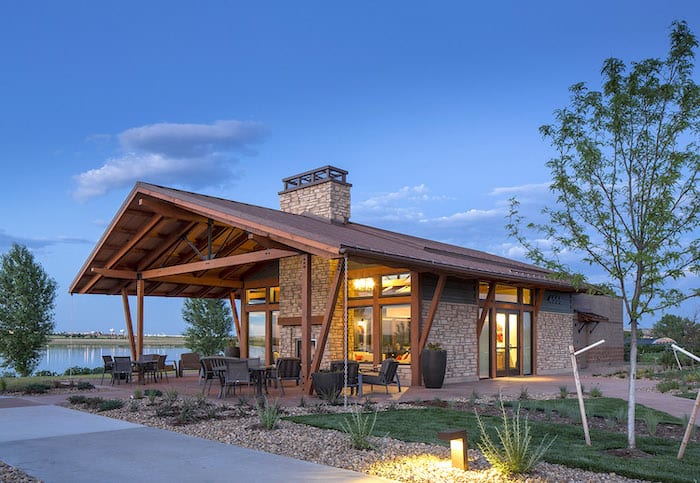Community by Design: Creating Space to Encourage Social Interaction and Connection

BUILDING DIALOGUE
What is community? As designers and builders, when we think about communities, we often think about the streets, homes, sidewalks, signs, parks and other buildings that help define the physical aspects of a place. We spend countless hours ensuring that the “vision” of a new neighborhood comes together. We talk about how wide the road should be, should the sidewalks be attached or detached, should the homes be front- or alley-loaded. We talk about density, setbacks and zoning codes. Most importantly, we make decisions every day with one basic idea in mind, “How do we create a place where people want to live?” The most successful new communities take this conversation one step further. They go beyond the built environment and look at the social aspects of how people interact with one another.
As a community designer and architect, I’ve been lucky enough to travel all over the U.S., touring and working on different communities from coast to coast. I’ve seen very successful projects and some that struggle. I’ve seen that great communities sell homes even in the worst economies. I’ve learned one very important lesson: Community design isn’t about the collection of built things, it’s about creating places to encourage connection, that allow people to bump into each other and form relationships. I’ve determined that neighborhood amenities are the catalyst for creating community.
The clubhouse and pool. The clubhouse/pool area is the most recognized public gathering space in a community. It is usually a central feature in the community, hosting birthdays, 4th of July celebrations and movie nights. It often helps define the character of a neighborhood, establishing the identity of a place. It can be the architectural icon of a neighborhood or a simple structure that is secondary to the homes around it. It can be a resort-style setting like the Hollows Beach Club in Lake Travis, Texas; a family focused pool like the Lake Club at the Lakes at Centerra in Loveland; or the amenity-packed Brighton Crossing Beach Club in Brighton. The community pool isn’t just a place to cool off on a hot summer day; it’s about the children who form life-long friendships while doing cannon balls into the deep end, the teens that can safely experience a sense of freedom and the 20-something‘s who bond over a cold drink on a Saturday afternoon.
Coffee shop and neighborhood café. Many communities are taking a new approach to community gathering spaces, taking inspiration from the “coffee shop around the corner.” The Blue Eyed Daisy Bakery at Serenbe outside of Atlanta or Biscotti’s Café at The Hub at Daybreak East in South Jordan, Utah, are two examples of community-centric cafes. These coffee shops are well designed, warm and welcoming places that serve great coffee and handcrafted food but are also so much more. Community coffee shops aren’t about the quick caffeine fix; what makes them special is the relationships formed. The guy who meets his future fiancé whilst hoping she doesn’t take the last scone; the mom connecting with another parent over an afternoon latte, eventually forging a friendship that helps get them through the challenging task of raising children.
Parks and open space. One of the oldest but still very effective means for creating community is through community parks and open spaces. People have been using public open space to gather for as long as they’ve been in existence. The newest master-planned community just breaking ground in Duvall, Washington, Walden at Big Rock and its Quarry House is activating these spaces, taking them from passive parks to interactive play areas that truly makes these places come to life. From dog parks to splash pads to natural playgrounds; it’s the open spaces that engage and encourage people to come together and form relationships. But like any built environment, the emphasis isn’t on the space itself it’s on the people who inhabit the space. The dog park is more than a place to let your dog roam free, the splash pad is more than a fun afternoon activity and even the small pocket park is more than a place to get some exercise before the afternoon nap; it’s about social interaction with members of your community.
It doesn’t matter if we as designers and developers are looking at dense urban environments or suburban master plans, residential or commercial spaces, apartments or single-family homes. The places we design and build have the opportunity to serve as a beacon in the community – where people can unplug from the chaos of everyday living, enjoy spontaneous interaction and experience a deeper connectedness.
Published in the March 2019 issue of Building Dialogue.
















